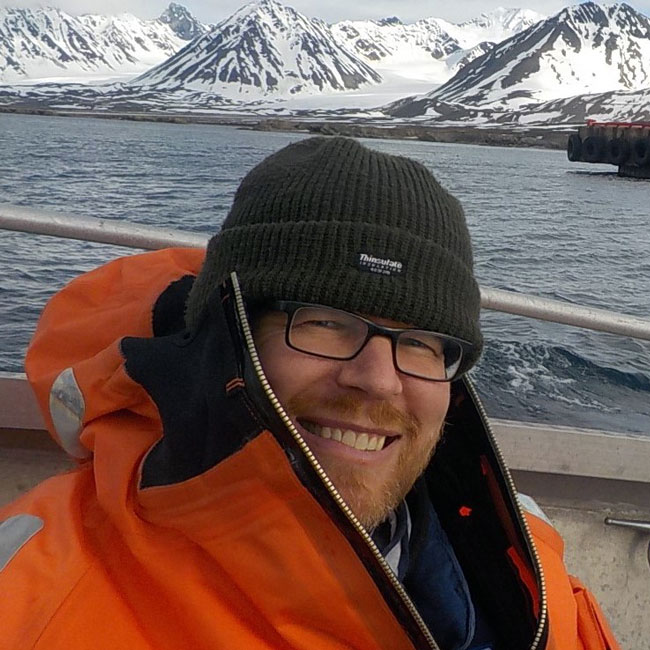Differential acclimation responses to irradiance and temperature in two co-occurring seaweed species in Arctic fjords
[Published 21 December 2021]
Scientific Publications
Abstract
Arctic fjord systems experience large amplitudes of change in temperature and radiation regime due to climate warming and the related decrease in sea ice. The resultant increase in irradiance entering the water column influences photosynthetic activity of benthic and pelagic primary producers. The subtidal brown alga Desmarestia aculeata and the intertidal red alga Palmaria palmata populate the cold-temperate coasts of the North Atlantic, reaching the polar zone. To evaluate their acclimation potential, we collected both species in Kongsfjorden, Svalbard (78.9°N, 11.9°E), during the Arctic summer and exposed specimens to two different PAR levels (50 and 500 μmol photons m−2 s−1) and temperatures (0, 4 and 8 °C) for 21 days. Photosynthetic parameters and biochemical features (pigment concentration and antioxidants) were assessed. In general, high irradiance was the factor that generated a negative effect for D. aculeata and P. palmata in the photosynthetic parameters of the photosynthesis–irradiance curve and Fv/Fm. The pigment concentration in both species tended to decrease with increasing irradiance. Antioxidant level showed different trends for both species: in D. aculeata, antioxidant potential increased with high irradiance and temperature, while in P. palmata, it only increased with high irradiance. Both species showed responses to the interaction of irradiance and temperature, although D. aculeata was more sensitive to high irradiance than P. palmata. Our study shows how these species, which have similar geographical distribution in the North Atlantic and the Arctic but belong to different taxonomic lineages, have similar strategies of acclimation, although they respond differently to ecophysiological parameters.
FACE-IT Scientists:
Kai BISCHOF
Marine Botany, University of Bremen, Germany
Center for Marine Environmental Sciences MARUM, University of Bremen, Germany
UBremen personal page
Kai’s FACE-IT Projects
Role in FACE-IT:
• Scientific Coordinator
• Member of the Executive Board
• Co-Leader "Policy Dialogue and Outreach"
• Co-Leader "Project Management"
• Leader "Ethical Requirements"
• Researcher "Biodiversity Changes"
• Researcher "Ecosystem Function Changes"

